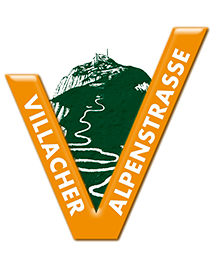Villach's local mountain & unique natural jewel Like a tower of strength, the Dobratsch sits enthroned in the middle of Carinthia’s lake district. The people of Villach adore and cherish their local mountain, which is also called Villacher Alpe, regarding it as a recreational area. Little wonder – where else can you get from the town into the high mountains within 20 minutes? This alpenstock is also a key drinking and thermal water reservoir in the region, as well as an area of traditional Alpine pastures and pilgrimage destination. For centuries, nature and culture have existed side by side around the Dobratsch. One of the many reasons which lead to the for Dobratsch being designated a nature park. But what actually is a nature park and what role does the Villach Alpine Road play in this nature park experience?
Since 2002: Dobratsch Nature Park
After mining was no longer economically viable on the Dobratsch in the 1980s, an idea came about to devise a new utilisation concept for the area. This thought gained additional impetus in 1997, when Villach was awarded the title of ‘Premier Alpine city of the year’. The focus was on the themes of ‘conservation areas close to the city’ and ‘sustainable usage’. In the 1990s there was still a ski area on Villacher Alpe. Creating artificial snow was not possible due to the granted drinking water protection status, so alternative ideas were needed. Thus, the ‘Nature Park’ project came about. And on 24th September 2002 the Dobratsch was recognised by the local government as the first nature park in Carinthia. Dobratsch Nature Park incorporates the nature and conservation-protected areas in Dobratsch, Schütt and Warmbad Villach spa resort, and is surrounded by the market towns of Arnoldstein, Bad Bleiberg, Nötsch in Gailtal and the town of Villach.
Read moreWhat makes a nature park a nature park?

Nature parks are model regions for sustainable development. The concept of a nature park is based upon five pillars, which stand homogeneously alongside one another: education, relaxation, regional development, protection and research.

Nature and culture and the connection between these two elements are experienced through interactive formats for grasping and experiencing the concept of nature, e.g. themes paths, experience guided tours and also through traditions.

A nature park ought to have attractive and well-tended facilities for relaxation, that are in keeping with the conservation area and the character of the landscape – e.g. hiking, cycling and horse-riding paths, places for rest and relaxation, and also barrier-free offers

A nature park ought to provide impetus for regional development to enhance the creation of value in a region and secure the quality of life of the people who live there.

The precious natural area is secured through sustainable usage, in terms of variety and beauty, and the cultural landscape that has been shaped over the centuries is preserved.

Collaboration with research facilities, universities, technical collages and higher level educational institutes ought to increase knowledge of nature and culture, and thereby create the basis for future measures.
Nature & cultural experience on Villach Alpine Road
In Dobratsch Nature Park at Villacher Alpe, you have the opportunity to experience a millennia-old cultural and natural landscape up close. Woodlands, Alpine pastures, streams and the high mountains provide an incomparable habitat for a variety of rare animal and plant species. In any case, 125 types of birds breed here and more than 1400 types of butterfly have been counted! Lizards scurry about on the southern slopes and the karst caves are inhabited by countless bats and bugs. Bears even live in the landslip area. There are also plants growing on the Dobratsch that are unique to the area, for instance the Illyrian gladiola and wulfenia.
Did you know ...
that in Austria there are currently 47 nature parks covering an overall area of some 500,000 hectares?
Nature park attractions on Villach Alpine Road

Along the view-packed panorama road at several locations there is the opportunity to enjoy intense nature-oriented adventures:
- Alpengarten at 1483 m altitude – some 800 Alpine plants in three climatic zones on an area spanning 10,000 square metres, just a short walk from the P6 car park
- Skywalk ‘Rote Wand’ viewing platform: breath-taking views 400 metres above the ground below and bird watching
- ‘Die Vogelwelt des Naturparks Dobratsch’ (‘Birds in Dobratsch Nature Park) exhibit in Aichingerhütte
- Educational geology path at the Rosstratte where you can read, observe and get stuck in
- Relaxing loungers at Rosstratte providing a unique panoramic view to the Alpine summits
- Chamois and summit view from the viewing platform (walking time from Rosstratte car park 20 mins; very suitable for small children and older visitors)
Out and about on the Dobratsch with a Nature Park ranger
During the summer months Dobratsch Nature Park offers various tours and day programmes, during which you enjoy exciting insights into the mountain habitat. Accompanied by a Nature Park rangers observe the chamois in their natural environment. During a myths and legends hike listen to entertaining and creepy stories about very special mountain inhabitants. And, in the second half of August, observe raptors as they come together in flocks above Villacher Alpe as they make their way south.


